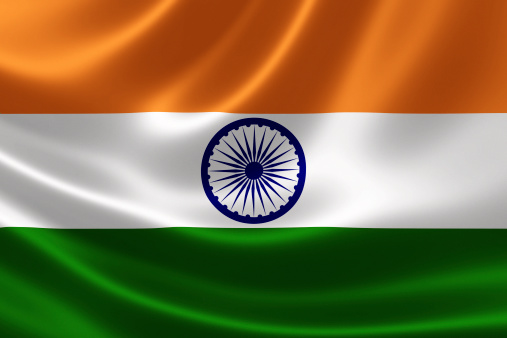By Tejaswi Ravinder Battala
Hyderabad, Aug 15, 2023: India enters the 77th year of independence today. On this day in 1947, after the announcement of the Independence, India faced two major challenges. One, framing of its own constitution, and two, the merging of various princely states into the independent India.
About 9 months before declaring independence, when the constituent assembly first met, the constitutional makers were headed out for an adventure. They gathered in the constitution hall, which is now known as the central hall of the parliament house, amid the cold winters of Delhi, on the December 9, 1946, with a firm resolve to give shape, print and word to the dreams and aspirations of millions of Indians.
Historical background:
From this very beginning stage, the constitutional makers decided to maintain transparency to allow the people of India and the world-at-large to be aware of what they determine to do, achieve and where they plan to head. The constituent assembly decided to pass a directional—a document to show how the assembly desires to lead the nation and achieve the objectives laid down.
Pandit Jawaharlal Nehru while moving the objectives resolution in the Constituent Assembly said, “Laws are made of words but this Resolution is something higher than the law. If you examine its words like lawyers you will produce only a lifeless thing.”
He urged the members of the assembly to consider the objectives resolution as a declaration, a pledge and an undertaking–a promise to achieve what they have promised the people of India and its future citizens—a constitution to call their own. Through the objectives resolution, Nehru declared India as an independent sovereign republic, “India is- bound to be sovereign, it is bound to be independent and it is bound to be a republic,” revealing the constituent assembly’s desire to end the monarchical system.
Further deliberations in the house over the next few months led to objective resolutions taking the form of the preamble of the constitution. However, the ‘Mountbatten plan’ divided India into two new dominions on 3rd June 1947 resulting in political changes in the constituent assembly and there was a need for the amendment of the resolution to suit the changed political context.
On August 29, 1947, the constituent assembly set up a drafting committee under the chairmanship of B R Ambedkar to prepare the constitution. The drafting committee headed by Ambedkar rendered the meaning and form to the preamble and, incorporated the other matters prescribed in the resolution in the main provisions of the constitution. It took roughly three years— two years, eleven months and seventeen days to complete the historic task of drafting the Constitution of India.
The Preamble:
The new preamble set-forth by Ambedkar defines the essential features of the Indian state and its socio-political objectives. The Constitution begins with the preamble. While drafting the constitution, the makers imagined an egalitarian society built on the values and the spirit embodied in the constitution.
Pandit Thakur Das Bhargav, a member of the constituent assembly said, “The Preamble is the most precious part of the Constitution. It is the Soul of the Constitution. It is the key to the Constitution. It is a jewel set in the Constitution. It is a proper yardstick with which one can measure the worth of the constitution.”
Trinity of Liberty, Equality and Fraternity:
The egalitarian society the constitutional makers envisioned to achieve through the constitution rests on the four pillars established in the preamble— the pillars of Justice, Liberty, Equality and Fraternity. However, the idealistic concept of Fraternity or Bhanduta in the Sanskrit language has been limited to the preamble and there has been no great emphasis on its significance in the rest of the constitution.
The French Revolution inspired the drafting committee to adopt the trinity concept of liberty, equality and fraternity in the preamble of the Indian constitution. The French were the first to raise the slogans “Liberty! Equality! Fraternity!” against the oppression by the state or government, with a motive to demand political participation, and to promote brotherhood. Of the three revolutionary slogans, fraternité, called for unity in solidarity, to be bound together as citizens of one nation.
In his concluding remarks on November 25, 1949, Ambedkar said, “We must make our political democracy a social democracy as well. Political democracy cannot last unless there lies at the base of its social democracy. What does social democracy mean? It means a way of life which recognizes liberty, equality and fraternity as the principles of life.”
Ambedkar firmly asserted that the principles of liberty, equality and fraternity are to be treated as a trinity and not as separate items. They have to be seen as mutually enforcing elements which cannot be divorced from each other.
“They form a union of trinity in the sense that to divorce one from the other is to defeat the very purpose of democracy. Liberty cannot be divorced from equality, equality cannot be divorced from liberty. Nor can liberty and equality be divorced from fraternity. Without equality, liberty would produce the supremacy of the few over the many. Equality without liberty would kill individual initiative. Without fraternity, liberty would produce the supremacy of the few over the many. Equality without liberty would kill individual initiative. Without fraternity, liberty and equality could not become a natural course of things. It would require a constable to enforce them,” he stated.
Ambedkar pointed at the existing social and economic inequality in the Indian society and the significance of the ideals of liberty, equality and fraternity to eliminate those inequalities. On October 17, 1949, Acharya Kriplani applauded the inclusion fraternity in the preamble —“Again I come to the great doctrine of fraternity, which is allied with democracy. It means that we are sons of the same God, as the religious would say, but as the mystic would say, that there is one life pulsating through us all, or as the Bible says ‘We are one of another.’ There can be no fraternity without this.”
Courts on Fraternity:
The Bombay High Court in Indian National Mines Overmen v. Western Coalfields Limited challenging the compulsory deduction of 50 rupees from the salary/wages of its employees for transfer to the Prime Minister’s National Relief Fund cited the explanation given by Ambedkar on fraternity, “fraternity means a sense of common brotherhood of all Indians.’
In a country like ours with so many disruptive forces of regionalism, communalism and linguism, it is necessary to emphasise and re-emphasize that the unity and the integrity of India can be preserved only by the spirit of brotherhood. India has one common citizenship and every citizen should feel that he is Indian first irrespective of other basis.
In this view, any measure at bringing about equality should be welcome.” The Court tried to draw an inference from fraternity quoted in the preamble and Dr Ambedkar’s speech on obligations imposed under Fundamental Duties chapter, which do not otherwise have any legal sanction.
In Prathvi Raj Chauhan v. Union of India challenging responding to the questions raised on the provisions of SC, ST (Prevention of Atrocities) Act, the Supreme Court expressed that the fraternity occupying as crucial a place of in the scheme of our nation’s consciousness and polity, is one of the lesser explored areas in the constitutional discourse of this court.
The court further stated, “The fraternity assured by the Preamble is not merely a declaration of a ritual handshake or cordiality between communities that are diverse and have occupied different spaces: it is far more.”
While evaluating the constitutional validity of the appointment of tribal people as special police officers in Maoist affected regions of Chhattisgarh in Nalini Sundar v. State of Chhattisgarh, the Supreme Court stated, “Our Constitution posits that unless we secure for our citizens conditions of social, economic and political justice for all who live in India, we would not have achieved human dignity for our citizens, nor would we be in a position to promote fraternity amongst groups of them. Policies that run counter to that essential truth are necessarily destructive of national unity and integrity.”
The apex court had time and again held that the Constitution casts a positive obligation on the State to undertake all such necessary steps in order to protect the fundamental rights of all citizens, and in some cases even of non-citizens, and achieve for the people of India conditions in which their human dignity is protected and they are enabled to live in conditions of fraternity.
The clause fraternity not only acts as the binding element between unity and equality, it gives birth to new rights which help to achieve the constitutional goal of an egalitarian society. The right to live with dignity and respect, free from oppression and untouchability, the fundamental rights granted in the constitution have been structured on the principles of life—the liberty, equality and fraternity ideals inscribed in the preamble of the constitution.
The preamble of the Universal Declaration of Human Rights proclaimed in the city of Paris by the United Nations General Assembly on December 10, 1948, also says “Whereas recognition of the inherent dignity and the equal and inalienable rights of all members of the human family is the foundation of freedom, justice and peace in the world.”
Thus, ‘fraternity’ engraved in the constitution must not be restricted to the preamble and must be allowed to freely flow into the legislations, judicial decisions and also the general public’s lives to uphold the sense of brotherhood that constitutional makers had envisioned for India. As asserted by Ambedkar, the ideals of liberty, equality and fraternity are co-existent and cannot be devoid of each other in the text as well as in emotion.
 (Tejaswi Ravinder Battala is an Associate with Versus Law Associates. She holds a Master of Law Degree in Constitutional Law from Osmania University, Hyderabad.)
(Tejaswi Ravinder Battala is an Associate with Versus Law Associates. She holds a Master of Law Degree in Constitutional Law from Osmania University, Hyderabad.)


Happy Independence Day. Jai Hind.